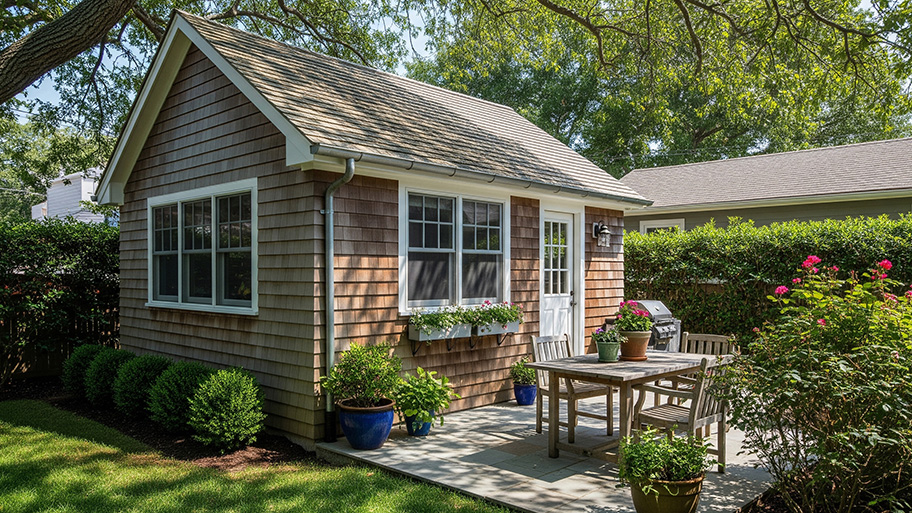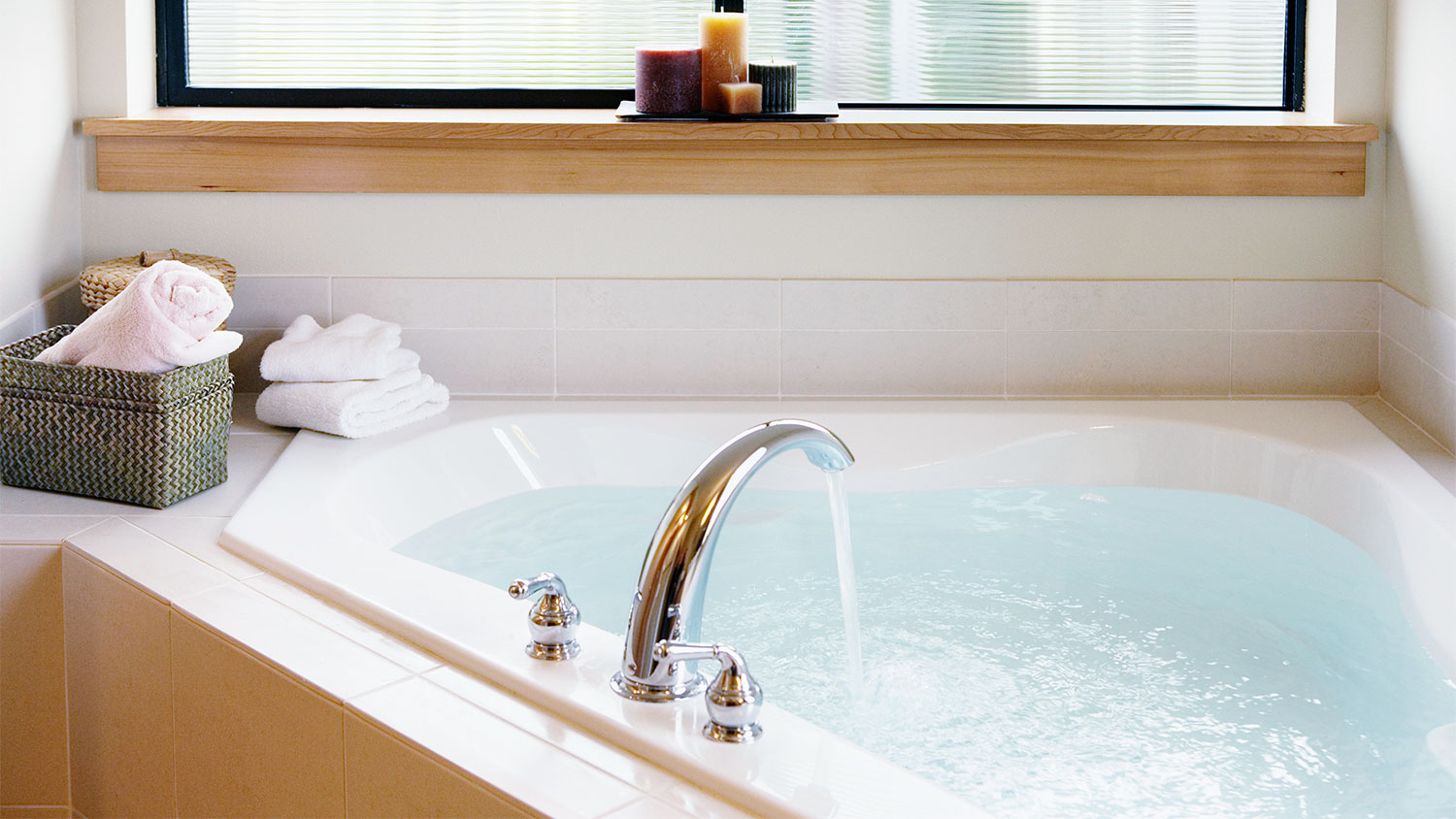
The cost of installing a bathtub or a shower liner depends on the type of tub or shower, size, and features. This guide will show what you can expect to pay for your project.
There’s square footage in your future


Small additions take up to four months, while large additions may take a year or more.
The construction process accounts for the largest part of the home addition timeline.
Weather conditions and material availability can delay project timelines.
Hiring home addition contractors over GCs can help speed up the process.
Building a home addition is a substantial undertaking that requires careful planning, coordination, and execution. A common question when considering this remodel is: how long does an addition take to complete? Learn the phases of the project’s timeline before you embark on a journey to increase your living space.
The duration of a home addition build can vary significantly based on its size and complexity, local permitting processes, and the availability of labor and materials. A straightforward addition, such as a small room or a simple extension, takes three to four months from planning to completion. This includes time for obtaining home addition permits, completing the design and architectural plans, and completing the construction work.
However, more complex additions, such as adding a second story to a house, a multiple-room bump-out, or extensive remodeling, can take anywhere from six months to a year or more. These projects require more detailed planning, structural modifications, and coordination among contractors and specialists who build home additions. Unforeseen issues, such as weather delays or supply chain disruptions, can further extend the timeline.
| Home Addition | Typical Timeline (months) |
|---|---|
| Attic conversion | 2–4 |
| Basement conversion | 3–4 |
| Bump-out addition | 4–12 |
| Second-story addition | 6–12 |
| Garage conversion | 2–4 |
| Room over garage | 3–6 |
| Sunroom addition | 2–6 |
During a home renovation, you may need a place to stay for a few weeks or months. First, ask friends or family if they can host you during the project's duration. If that's not an option, you can look into renting a small furnished home or apartment with a short-term or month-to-month lease. Vacation rental sites may also offer a good value if you book for an extended stay—especially if it's off-season. Remember: furnishings and flexibility are key.

While different types of home additions will vary when it comes to the construction timeline, you'll follow a general guideline throughout the process. Here’s a look at how long each planning and construction phase will take:
Reach out to architects and contractors in your area to discuss your project and collect estimates. Once you've narrowed down your top picks, you'll have an initial consultation to meet with architects and contractors to plan the project.
Next, the design process will start. Your architect will create design plans and get your approval. There might be some back-and-forth in this process to zero in on your ideas, especially if you’re working on something truly custom. Your architect will then send the plans to local authorities for approval. Getting permits and building approval can take several weeks or months, depending on local regulations.
Preparation for the addition site will begin by clearing the area, removing existing structures if necessary, and marking the layout. Your remodel team will then begin purchasing and arranging delivery of project materials, which can take time depending on availability and lead times.
The construction timeline will vary greatly depending on the addition. Smaller projects will take less time than larger, more complex ones. Something like an attic conversion, for example, may just sit in the construction phase for a few weeks, while an expensive bump-out addition that requires foundation work and framing can take several months.
Electrical, plumbing, and HVAC connections can also add to your timeline, as can insulation, installing drywall, painting, and laying flooring.
The finishing process can take a few months if you’re adding cabinetry, countertops, and other major interior elements, but it could just take a week or so if finishing involves connecting fixtures and installing trim. Exterior finishes aren’t necessary for conversion additions, but things like adding siding, painting, and tackling any exterior landscaping or hardscaping can add several months to your timeline if you’re building a new structure.
During the final inspections and walkthrough, your remodel team will ensure everything meets code and homeowner standards, followed by any necessary adjustments or fixes.
Finally, your professional will remove construction debris following the final walkthrough, and this can take a single day or a few weeks, depending on the size of the project.

Home additions aren't always straightforward, and the timeline can vary based on several factors.
Scope and complexity of the project: Larger and more complex additions, such as adding multiple rooms, a second story, or adding a sunroom, require more time for planning, structural modifications, and construction compared to smaller, simpler projects, like attic conversions.
Permits and zoning requirements: Obtaining necessary permits and approvals from local authorities can be time-consuming. Some areas have more stringent zoning laws and building codes, and some building departments are backed up with approvals, both of which can delay the project.
Design changes: Changes to the design after construction begins can cause significant delays. Even minor alterations can require revising plans, obtaining new permits, and adjusting construction schedules.
Availability of labor and materials: Shortages, especially of specialized contractors or specific building materials, can lead to delays.
Weather conditions: Adverse weather conditions, such as heavy rain, snow, or extreme temperatures, can halt outdoor construction work, although this is rarely an issue if you’re converting an existing area into a living space.
Site conditions: Unforeseen issues with the construction site, such as poor soil quality, underground utilities, or existing structural problems, can require additional work and time to address.
Inspections and approvals: Various stages of construction require inspections to ensure compliance with building codes. Scheduling these inspections and addressing any issues can add to the project timeline.
Budget constraints: Financial constraints or unexpected room addition costs can pause construction while you adjust your budget.
Accelerating a home addition remodel starts with meticulous planning and design. Clear, detailed plans that account for potential issues minimize surprises and change orders during construction, keeping the project on schedule. Consider using prefabricated or modular components where feasible, as these can be quicker to source and install than traditional construction methods.
Hire reliable and experienced local home addition contractors with a reputation for timely delivery. You can also search for professionals with specific experience based on your needs, such as a contractor who knows how to finish a basement or how to finish an attic. Clearly coordinating with your contractors will help prevent delays and ensure timely progress. Maintain open communication with your contractor throughout the project to address any issues promptly and make swift decisions to avoid bottlenecks.
From average costs to expert advice, get all the answers you need to get your job done.

The cost of installing a bathtub or a shower liner depends on the type of tub or shower, size, and features. This guide will show what you can expect to pay for your project.

Your faucet plays a major role in your kitchen's overall design and functionality. Learn how much it costs to install a kitchen faucet based on brand, type, and city.

Accessory dwelling units can be a smart investment, but your ADU cost will depend on the size, type, and materials you choose. Here’s how it breaks down.

An updated bathtub can give a bathroom a whole new look. Find out how much it costs to replace a bathtub in Charlotte, NC, including prices by type and labor costs.

An updated bathtub can give a bathroom a whole new look. Find out how much it costs to replace a bathtub in Kansas City, MO, including prices by type and labor costs.

Learning how to remodel a house on a budget involves prioritizing projects and figuring out how much of the work you can do yourself to save on labor costs.